Infiniti Bets on Tech to Fight Big German Luxury

Infiniti is running at wide-open throttle right now trying to reinvent itself in a crowded marketplace.
Nissan’s luxury division is working to reposition itself as a challenger brand to other top-tier automakers. They’re hoping to achieve this by emphasizing things like performance, precision and curiously, provocation. Industry-leading technology is a key component to this strategy and plenty is available in the new Q50 sedan.
The car formerly known as G has been completely reworked for the 2014 model year. It features a striking new design, refined powertrains and of course lots of fancy new features. The vehicle’s signature item is called Direct Adaptive Steering, DAS for short. Thanks to advanced electronics it eliminates the physical connection between the front wheels and the driver’s hands, providing true steer-by-wire.
SEE ALSO: Infiniti’s Direct Adaptive Steering Explained
But this aerospace-level highlight is not the only piece of cutting-edge technology offered in the car. There are numerous other features of note.
KEEPING (INFINITI) INTOUCH
Infotainment is all the rage these days. Drivers want to remain connected to their social networks and other services at all times; just because they’re behind the wheel doesn’t mean they should have to sacrifice this always-on availability.
Catering to the connected crowd Infiniti engineers have created an advanced new infotainment system for the Q50 sedan, and it’s called InTouch. According to Chip Goetzinger, Senior Manager Infiniti vehicle connected services this technology is a “paradigm shift in automotive infotainment.”
Unlike competing systems this one uses two screens, one above the other. The upper display spans eight inches and is dedicated to the navigation system and related functions. The lower screen is a bit smaller, clocking in at just seven inches, but it handles things related to infotainment, settings and applications.
Like a modern smartphone Infiniti’s InTouch technology offers customers access to various in-car apps. These mini programs range from things like e-mail, calendar access and a compass, to maintenance reminders and Twitter. Yes, you can tweet from the driver’s seat in Infiniti’s new Q50.
Fortunately engineers have limited what you can do with InTouch while the vehicle is in motion. Functionality is restricted to things that are appropriate. In the instance of Twitter you can only tweet with special pre-defined responses while on the road. This is designed to minimize driver distraction.
Beyond the touch interfaces Goetzinger said “[we’ve] kept hard buttons around the lower screen,” something that makes it a snap to access commonly needed controls for the climate and audio systems.
Another benefit of InTouch is that according to Goetzinger “it’s an upgradable platform.” Going forward the system can be improved via software updates, as can the applications available. This gives it a longer shelf life than other technologies on the market today.
“SAFETY SHIELD”
It isn’t sexy like infotainment technology, but safety is arguably far more important. You can live without updating twitter every morning during your commute to work, but if you happen to get into a crash chances you won’t walk away unscathed without airbags, crumple zones and seat belts.
The 2014 Infiniti Q50 comes with a wide variety of advanced safety features designed to protect occupants in all kinds of smashups. The company calls them the whole shebang “Safety Shield,” and here’s some of what it entails.
The company divides this suite of technology into two separate segments, active and passive. The active category includes things like Blind Spot Warning and Blind Spot Intervention, Intelligent Cruise Control and Active Lane Control plus a ton of other cutting-edge stuff. Items like intelligent load-shifting seats fall into the passive category, but more on those later.
Additionally, Bert Brooks, Senior Manager, product planning, Infiniti Q50, Infiniti Americas said many of these systems are “completely adjustable by the driver.” If one of them annoys you, chances are it can be disabled. Choice is a beautiful thing.
SEE ALSO: 2014 Infiniti Q50 Review – VIDEO
One of the car’s most intriguing features is called Predictive Forward Collision Warning (PFCW). Plenty of today’s vehicles are available with emergency braking technology, systems that can stop a car if the driver isn’t paying attention and is about to slam into the vehicle ahead of them. But aside from the Q50 no other vehicle can see in front of that vehicle. Yes, this Infiniti sedan can literally monitor traffic ahead of the car ahead of you.
It functions by cleverly sending a radar beam under the vehicle directly ahead. This allows it to detect what the car or truck ahead of that vehicle is doing. If its velocity suddenly drops PFCW can alert you of danger before you even know you’ve got to hit the brakes. Unfortunately we have not had an opportunity to test this technology.
But not all safety features need computer processors and a battery of military-spec sensors. The Q50’s intelligent load-shifting seats require little more than a stamped piece of steel to help save lives.
Side-impact crashes are some of the most challenging for a vehicle’s safety systems to deal with. In head-on collisions there’s typically a lot of crumple space, but not so with transverse impacts.
Infiniti engineers have come up with a brilliant way of protecting front-seat riders in side crashes. They’ve developed a special angled bracket that mounts in the seat back. During a transverse impact the side of the car deforms and engages this bracket, which transfers forces to the center tunnel of the car, a sturdy part of its structure. Brooks called this innovation “a useful way to dissipate energy.”
Infiniti representatives project the Q50 will perform well in the Insurance Institute for Highway Safety’s (IIHS) demanding small-overlap crash test. They expect it will receive a “Good” rating, the highest awarded by the organization. As for the load-shifting bracket, Brooks said “I don’t know of any competitor that’s doing that right now.”
CHASSIS
In addition to active and passive safety the 2014 Q50’s body features a number of enhancements that improve its dynamic performance. The car’s architecture is essentially all new compared to the outgoing G family.
In fact the Q50 outguns its predecessor with a 60 percent improvement in front body bending stiffness, which means it feels sturdier and handles better. Additionally, the structure is partially comprised of high-strength, hot-pressed steel, which helps trim excess mass without sacrificing strength. The car’s structure is 13 pounds lighter than the G series.
Icing on the chassis cake is aerodynamics. The car features a coefficient of drag of just 0.26, which is a pretty amazing figure for a luxury performance sedan. For a little perspective Toyota claims its Prius hybrid slices through the air with a drag coefficient of just 0.25.
With a fresh new design, beautifully crafted interior, enticing dynamics and of course cutting-edge technology the 2014 Infiniti Q50 is a force to be reckoned with in the luxury sports sedan segment. The BMW 3 Series, Audi A4 and Lexus IS had better watch out, there’s a new challenger in town.

Born and raised in metro Detroit, Craig was steeped in mechanics from childhood. He feels as much at home with a wrench or welding gun in his hand as he does behind the wheel or in front of a camera. Putting his Bachelor's Degree in Journalism to good use, he's always pumping out videos, reviews, and features for AutoGuide.com. When the workday is over, he can be found out driving his fully restored 1936 Ford V8 sedan. Craig has covered the automotive industry full time for more than 10 years and is a member of the Automotive Press Association (APA) and Midwest Automotive Media Association (MAMA).
More by Craig Cole
























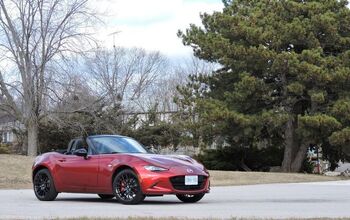
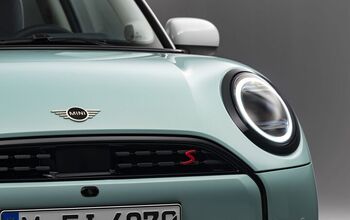
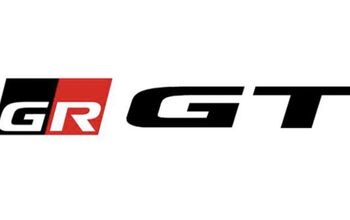


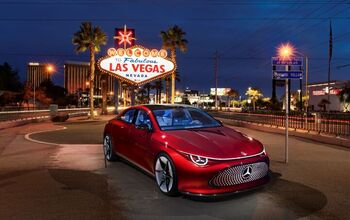


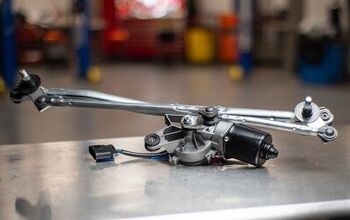

Comments
Join the conversation